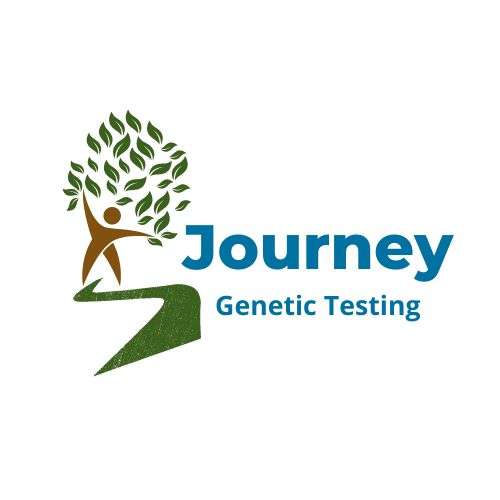DNA Testing In Colorado
Colorado DNA Tests – What You Should Know
Journey Genetic Testing provides approved, budget-friendly, and 100% accurate DNA testing services in Colorado. We specialize in paternity and family relationship genetic testing. Based on your unique situation and need, we can provide results that are either for peace of mind, or are court-ready.
Confidential at home DNA kits permitted for use in Colorado will provide the same results as legally admissible process, but are not usually admissible in court as there is no verification of the individual of those providing the DNA samples for the laboratory study.
Our legal AABB accredited DNA results can be used in court for matters such as: child support, birth certificates, and custody cases. Legal test reports can also be used for Social Security benefits, IRS verification of dependents, probate issues, and immigration cases. We have a legal DNA collection network of over 3,500 authorized DNA collection sites in the United States, and will be able to set up a time for your DNA collection with a collection location close to your home or office.
You can securely order both a legal and home test from us online 24/7, or call us at 855-362-5224 with any questions, during our regular business hours.
Colorado Approved DNA Testing Options
To learn more about a specific genetic test approved for use in Colorado, please click on one of our options below.
Our Colorado Approved DNA Tests Are 100% Accurate
Journey Genetic Testing’s home paternity test and relationship DNA tests provides you with a conclusive and accurate result for DNA testing between the participants. Our parent laboratory performs every DNA test twice, and the results are ready in just 1-2 business days, depending on the test. Every DNA test we do in your state is guaranteed to be Colorado approved and 100% accurate. And above all, your result will establish the truth of the relationship tested for. Get the answers you need and deserve today,
Journey Genetic Testing offers the best DNA paternity test at the lowest prices in the industry. Furthermore, all of our home DNA tests are performed by expert geneticists using scientifically-valid methods and state-of-the-art equipment in our AABB accredited partner laboratory, located in the USA. No test results are released until all data has been examined, and approved, by one of our experienced laboratory Ph.D.’s.
Our DNA testing service is unmatched in quality and yet very affordable. You can be assured that your DNA samples will be handled discreetly and processed confidentially. With our technology and affordable DNA test prices, there is no longer a need to go without knowing the truth about a biological relationship.
See a list of Colorado locations where there is an authorized DNA collection center for legal DNA testing.
- Arvada
- Aurora
- Berthoud
- Boulder
- Brighton
- Broomfield
- Canon City
- Castle Pines
- Castle Rock
- Centennial
- Colorado Springs
- Commerce City
- Denver
- Durango
- Englewood
- Erie
- Evans
- Federal Heights
- Firestone
- Fort Collins
- Fountain
- Frederick
- Fruita
- Golden
- Grand Junction
- Greeley
- Greenwood Village
- Johnstown
- Lafayette
- Lakewood
- Littleton
- Lone Tree
- Longmont
- Louisville
- Loveland
- Montrose
- Northglenn
- Parker
- Pueblo
- Severance
- Steamboat Springs
- Sterling
- Superior
- Thornton
- Wellington
- Westminster
- Wheat Ridge
- Windsor
Colorado Paternity Law
If you are thinking about doing a DNA test to establish paternity, and are needing the results to be used for court, immigration, or child support, it may be helpful to know about paternity laws in Colorado. Colorado has very extensive paternity statutes. The information presented here about Colorado paternity laws is provided as general information only. Journey Genetic Testing does not provide legal advice or representation. We encourage you to research your state laws for the most current information, or contact a family law attorney.
Read Colorado’s paternity laws
Colorado Paternity Law: Section 19-4
19-4-102 – Parent and child relationship defined.
As used in this article, “parent and child relationship” means the legal relationship existing between a child and his natural or adoptive parents incident to which the law confers or imposes rights, privileges, duties, and obligations. “Parent and child relationship” includes the mother and child relationship and the father and child relationship. Source: L. 87: Entire title R&RE, p. 793, § 1, effective October 1. Law reviews. For comment, “Bastardizing the Legitimate Child: The Colorado Supreme Court Invalidates the Uniform Parentage Act Presumption of Legitimacy in R. McG. v. J.W.”, see 59 Den L.J. 157 (1981). For comment, “The Unwed Father’s Parental Rights and Obligations After S.P.B.: A Retreat in Constitutional Protection”, see 60 Den. L.J. 659 (1983). Annotator’s note. The following annotations include cases decided under former provisions similar to this section. One basic purpose of this article is the establishment of the parent-child relationship, and another is the protection of that relationship. R. McG. v. J.W., 200 Colo. 345, 615 P.2d 666 (1980). Applied in People in Interest of S.P.B., 651 P.2d 1213 (Colo. 1982).
19-4-103 – Relationship not dependent on marriage.
The parent and child relationship extends equally to every child and to every parent, regardless of the marital status of the parents. Source: L. 87: Entire title R&RE, p. 793, § 1, effective October 1. Law reviews. For comment, “Bastardizing the Legitimate Child: The Colorado Supreme Court Invalidates the Uniform Parentage Act Presumption of Legitimacy in R. McG. v. J.W.”, see 59 Den. L.J. 157 (1981). For comment, “The Unwed Father’s Parental Rights and Obligations After S.P.B.: A Retreat in Constitutional Protection”, see 60 Den. L.J. 659 (1983). Annotator’s note. The following annotations include cases decided under former provisions similar to this section. One basic purpose of this article is the establishment of the parent-child relationship, and another is the protection of that relationship. R. McG. v. J.W., 200 Colo. 345, 615 P.2d 666 (1980). Applied in People in Interest of S.P.B., 651 P.2d 1213 (Colo. 1982).
19-4-104 – How parent and child relationship is established.
The parent and child relationship may be established between a child and the natural mother by proof of her having given birth to the child or by any other proof specified in this article, between a child and the natural father pursuant to the provisions of this article, or between a child and an adoptive parent by proof of adoption. Source: L. 87: Entire title R&RE, p. 793, § 1, effective October 1. Am. Jur.2d. See 10 Am. Jur.2d, Bastards, § 46. Annotator’s note. The following annotations include cases decided under former provisions similar to this section. One basic purpose of this article is the establishment of the parent-child relationship, and another is the protection of that relationship. R. McG. v. J.W., 200 Colo. 345, 615 P.2d 666 (1980). Section authorizes establishment of paternal relationship between a child and its natural father and recognizes the right of putative fathers to bring an action to establish paternity under the applicable provisions of this article. R. McG. v. J.W., 200 Colo. 345, 615 P.2d 666 (1980). No provision for father not married to married natural mother to establish paternity. This article makes no provision for a male claiming to be the natural father of a child to bring an action to establish his paternity under circumstances where he was not married to the natural mother and the child was born to the natural mother during her marriage to another. R. McG. v. J.W., 200 Colo. 345, 615 P.2d 666 (1980).
19-4-105 – Presumption of paternity.
(1) A man is presumed to be the natural father of a child if:
(a) He and the child’s natural mother are or have been married to each other and the child is born during the marriage, within three hundred days after the marriage is terminated by death, annulment, declaration of invalidity of marriage, dissolution of marriage, or divorce, or after a decree of legal separation is entered by a court;
(b) Before the child’s birth, he and the child’s natural mother have attempted to marry each other by a marriage solemnized in apparent compliance with law, although the attempted marriage is or could be declared invalid, and:
(I) If the attempted marriage could be declared invalid only by a court, the child is born during the attempted marriage or within three hundred days after its termination by death, annulment, declaration of invalidity of marriage, dissolution of marriage, or divorce; or
(II) If the attempted marriage is invalid without a court order, the child is born within three hundred days after the termination of cohabitation;
(c) After the child’s birth, he and the child’s natural mother have married, or attempted to marry, each other by a marriage solemnized in apparent compliance with law, although the attempted marriage is or could be declared invalid, and:
(I) He has acknowledged his paternity of the child in writing filed with the court or registrar of vital statistics, if such acknowledgment has not previously become a legal finding pursuant to paragraph (b) of subsection (2) of this section;
(II) With his consent, he is named as the child’s father on the child’s birth certificate; or
(III) He is obligated to support the child under a written voluntary promise or by court order or by an administrative order issued pursuant to section 26-13.5-110, C.R.S.;
(d) While the child is under the age of majority, he receives the child into his home and openly holds out the child as his natural child;
(e) He acknowledges his paternity of the child in a writing filed with the court or registrar of vital statistics, which shall promptly inform the mother of the filing of the acknowledgment, and she does not dispute the acknowledgment within a reasonable time after being informed thereof, in a writing filed with the court or registrar of vital statistics, if such acknowledgment has not previously become a legal finding pursuant to paragraph (b) of subsection (2) of this section. If another man is presumed under this section to be the child’s father, acknowledgment may be effected only with the written consent of the presumed father or after the presumption has been rebutted.
(f) The genetic tests or other tests of inherited characteristics have been administered as provided in section 13-25-126, C.R.S., and the results show that the alleged father is not excluded as the probable father and that the probability of his parentage is ninety-seven percent or higher.
(2) (a) A presumption under this section may be rebutted in an appropriate action only by clear and convincing evidence. If two or more presumptions arise which conflict with each other, the presumption which on the facts is founded on the weightier considerations of policy and logic controls. The presumption is rebutted by a court decree establishing paternity of the child by another man.
(b) A duly executed voluntary acknowledgment of paternity shall be considered a legal finding of paternity on the earlier of:
(I) Sixty days after execution of such acknowledgment; or
(II) On the date of any administrative or judicial proceeding pursuant to this article or any administrative or judicial proceeding concerning the support of a child to which the signatory is a party.
(c) A legal finding of paternity may be challenged in court only on the basis of fraud, duress, or mistake of material fact, with the burden of proof upon the challenger. Any legal responsibilities resulting from signing an acknowledgment of paternity, including child support obligations, shall continue during any challenge to the finding of paternity, except for good cause shown. Source: L. 87: Entire title R&RE, p. 793, § 1, effective October 1. L. 89: (1)(c)(III) amended, p. 1247, § 3, effective April 1. L. 91: (1)(f) amended, p. 253, § 10, effective July 1. L. 97: (1)(c)(I), (1)(e), and (2) amended, p. 1274, § 13, effective July 1. Cross references: For the legislative declaration contained in the 1997 act amending this section, see section 1 of chapter 236, Session Laws of Colorado 1997. Am. Jur.2d. See 10 Am. Jur.2d, Bastards, § § 10-18.
C.J.S. See 14 C.J.S., Children Out-of-Wedlock, § § 13-17. Law reviews. For comment, “Bastardizing the Legitimate Child: The Colorado Supreme Court Invalidates the Uniform Parentage Act Presumption of Legitimacy in R. McG. v. J.W.”, see 59 Den. L.J. 157 (1981). For article, “Legislative Update”, see 12 Colo. Law. 1257 (1983). Annotator’s note. The following annotations include cases decided under former provisions similar to this section.
Section 19-6-104 authorizes establishment of paternal relationship between child and its natural father and recognizes the right of putative fathers to bring an action to establish paternity under the applicable provisions of this article.
No provision for father not married to married natural mother to establish paternity. This article makes no provision for a male claiming to be the natural father of a child to bring an action to establish his paternity under circumstances where he was not married to the natural mother and the child was born to the natural mother during her marriage to another. R. McG. v. J.W., 200 Colo. 345, 615 P.2d 666 (1980). And denial of standing unconstitutional. The juvenile court’s construction of this article denying a claiming natural father not married to the natural mother statutory capacity or standing to commence a paternity action in connection with a child born to the natural mother during her marriage to another in order to establish that he was the natural father of the child violated equal protection of the laws under the fourteenth amendment to the United States constitution, § 25 of art. II, Colo. Const., and the equal rights amendment to the Colorado constitution, § 29 of art. II, Colo. Const. R. McG. v. J.W., 200 Colo. 345, 615 P.2d 666 (1980). Presumed father under subsection (1)(d). When man received child into his home and openly held out the child as his natural child, he is presumed to be the father, and it is an error for court to dismiss in summary judgment proceedings. D.S.P. v. R.L.K., 677 P.2d 959 (Colo. App. 1983). Presumption is procedural, and retroactive application is proper where action commenced prior to enactment of this section. People in Interest of R.F.A., 744 P.2d 1202 (Colo. App. 1987). Any presumption of paternity established under this section may be rebutted in an appropriate action by clear and convincing evidence or by a court decree establishing paternity of the child by another man. People in Interest of R.T.L., 780 P.2d 508 (Colo. 1989). It is clear from subsection (1)(a) of this section and § 19-4-107 (1)(b) that a man presumed to be a child’s father by reason of his marriage to the child’s mother at the time of conception is precluded from initiating an action to declare the nonexistence of the presumed father and child relationship after the child reaches the age of five. People in Interest of R.T.L., 780 P.2d 508 (Colo. 1989). In cases in which paternity is disputed, whether in a proceeding under this article or article 6, paternity must be determined according to the procedures outlined under this article before the legal obligation for support can be imposed. People in Interest of R.T.L. 780 P.2d 508 (Colo. 1989). An interpretation of § 19-4-107 (1)(b) that would deny the right of a presumptive father to defend against a child support action by asserting the nonexistence of a father and child relationship runs counter to principles of statutory construction and would produce results not consistent with the welfare of the affected children and the best interests of society. In a child support action under article 6 of this title, the defense of nonpaternity may be asserted by a man presumed to be the father pursuant to subsection (1)(a) of this section notwithstanding that the man would have been precluded by § 19-4-107 (1)(b) from bringing an action under this article to declare the nonexistence of the father and child relationship because of the passage of time. People in Interest of R.T.L., 780 P.2d 508 (Colo. 1989). Applicability of doctrine of res judicata. Failure to raise the defense of nonpaternity during dissolution proceedings bars a presumed father from collaterally attacking the determination of paternity implicitly supporting award of child support incident to such dissolution proceedings brought under URESA. State Ex Rel. Daniels v. Daniels, 817 P.2d 632 (Colo. App. 1991). For evidence sufficient to show nonaccess, see M.W. and A.W. v. D.G., 710 P.2d 1174, (Colo. App. 1985). Applied in Jefferson County Dep’t of Social Servs. v. D.A.G., 199 Colo. 315, 607 P.2d 1004 (1980); B.G. v. S.G., 199 Colo. 403, 609 P.2d 121 (1980); K.H.R. By and Through D.S.J. v. R.L.S., 807 P.2d 1201 (Colo. App. 1990).
Required Probability of Paternity for Colorado Courts: 97%
Required Paternity Index: None
Ordering A Home DNA Test In Colorado Is Quick, Easy, And Private
You Order – We Ship Right Away: Once we receive your paternity test order, we will ship priority a customized DNA collection kit (first kit free). We will provide you a tracking number for your kit.
Collect And Return The DNA Samples: Painless cheek swabs are provided to collect the DNA. The collection per person takes less than a minute. Return the DNA to our laboratory using the prepaid overnight FedEx label we provide (U.S.A. addresses).
Our Lab Performs The Specimen Analysis: After all DNA samples are received in lab, the testing begins. We will notify you by email they have been received and give you a due date for your results.
We Deliver Your DNA Results: We know you want these results quickly, so we will your paternity test results to the email address on file. If you also requested a printed copy of the results they will be sent priority within one business day of emailing your results, with a tracking number.
Colorado DNA Testing FAQs
A home DNA test provides a cheap, private, simple, and 100% accurate method to determine relationships such as paternity, sibling, grandparents, and aunt/uncle. Having your home DNA test kit processed in a AABB accredited lab is important. The same protocols used for a legally binding DNA test in the privacy and comfort of your own home or office will be used for your home DNA test. Our home DNA paternity test can answer your biological questions privately, quickly and affordably.
The recognized and accepted process in Colorado for home paternity testing is very easy. People who take the home DNA test usually collect their DNA sample through a cheek swab, also called a buccal, swab. Rubbing the swab against the inside of the cheek painlessly collects the skin cells needed. Since we conduct two sets of tests on each buccal swab, there will be 4 swabs per person in your collection kit. Two swabs should be taken on each side of the mouth. Don’t smoke or drink coffee or tea for 3 hours before the collection, and rinse the mouth with water. When you’re done, just put the samples in the envelope we provide.
The cheek swab is the most common method of collection. Sometimes a test participant cant submit a sample because a family member is deceased, imprisoned or unavailable. For these reasons, we also offer forensic DNA processing services for other types of DNA samples, which are referred to as “non-standard samples.” Ear wax, hair (must have the root attached), discharge on a tissue, nail clippings, and toothbrushes are the most common forensic samples. A viability test is required on all non-standard samples, which requires an additional fee. For more information about the different items that can be tested, please click on NON-STANDARD DNA SAMPLES.
Unlike many locations outside of the U.S.A., Colorado will allow testing using non-standard samples. If you have a particular concern about this, please check the laws in your state.
A lot of test participants live too far apart to do the home DNA test using the same DNA kit. For these situations, we offer an option to have multiple collection kits shipped out. Simply choose the option for an additional address when you place your order. When your DNA samples and case information are received back in the lab, identical reference numberswill link them together.
Paternity tests always give a clear yes or no answer. If the father is unavailable, there are other DNA tests we offer to determine paternity. For example, a sibling DNA test may be used to test for possible brothers and sisters. You can also perform a grandparent DNA test for the alleged grandparent and grandchild. The aunt/uncle avuncular DNA test with a full sibling of the alleged parent would also be convincing. You may also want to do a Y-DNA test if 2 men want to find out if they are related through the male line. This test is also always conclusive. If more than one paternal relative is available to participate in a DNA test, consider doing a family genetic reconstruction DNA test instead.
If you are not certain which choice is right for your situation, one of our Genetic Consultants would be glad to provide you help. Just give us a call at 1-855-362-5224.













